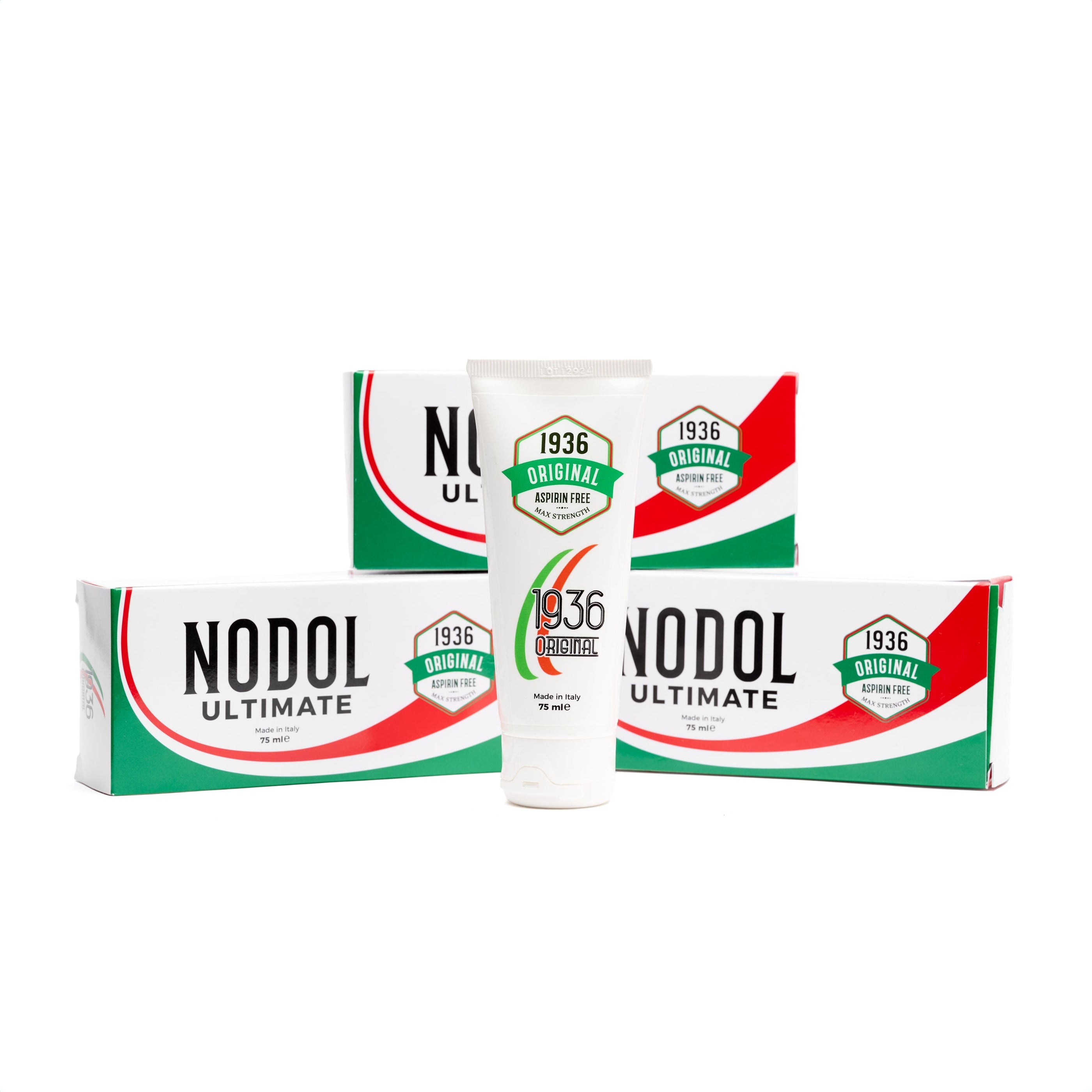What is the Most Effective Medication for Arthritis?

Introduction
Arthritis is a group of inflammatory joint diseases affecting millions worldwide. It manifests in various forms, with osteoarthritis and rheumatoid arthritis being the most prevalent. The condition often leads to persistent pain, swelling, and stiffness in joints, such as those in the fingers, knees, and hands. These symptoms can significantly hinder daily activities and reduce quality of life.
Effective medication plays a crucial role in managing arthritis symptoms by alleviating pain and inflammation while improving joint function. Identifying the most effective medication for arthritis depends on the type of arthritis you have and your individual health needs. This article delves into the different types of arthritis and explores various treatment options available.
You will gain insights into:
- Understanding Arthritis: Definitions and symptoms.
- Medications for Arthritis Management: Treatments for osteoarthritis and rheumatoid arthritis.
- Pain Relief Strategies Beyond Medication: Topical treatments, supplements, diet, exercise, and more.
By the end of this read, you'll be better equipped to discuss your treatment options with healthcare professionals and make informed decisions about managing arthritis effectively.
While conventional medication is essential, exploring natural health options can also provide significant relief. These alternative strategies may include dietary changes, exercise regimens, and the use of natural supplements which have been known to alleviate some arthritis symptoms and improve overall well-being.
Understanding Arthritis
Arthritis, a term often associated with inflammatory joint diseases, encompasses over 100 different types of conditions that affect the joints and surrounding tissues. Each type of arthritis presents unique challenges and characteristics, making it essential to understand the specifics for effective management.
Common Types of Arthritis
1. Osteoarthritis (OA)
Often referred to as "wear and tear" arthritis, this condition primarily affects the cartilage — the cushioning tissue at the ends of bones. As cartilage wears down, bones may rub against each other, causing pain and stiffness. OA frequently impacts weight-bearing joints such as the hips and knees.
2. Rheumatoid Arthritis (RA)
An autoimmune disorder where the body's immune system mistakenly attacks joint tissues. RA can lead to severe inflammation, joint damage, and deformities if not managed appropriately. Unlike OA, which usually affects specific joints, RA often targets multiple joints throughout the body simultaneously.
3. Psoriatic Arthritis
This type occurs in some individuals with psoriasis, a skin condition characterized by red patches with silvery scales. Psoriatic arthritis can cause joint pain, stiffness, and swelling and may also affect areas such as fingers and toes.
Other notable types include juvenile arthritis, which affects children under 16, causing persistent joint pain and swelling. Each type requires distinct attention to manage effectively.
Symptoms and Daily Impact
Individuals with arthritis may experience a range of symptoms:
- Pain: A constant or intermittent sensation that can vary from mild discomfort to severe agony.
- Swelling: Inflammation around affected joints can lead to noticeable swelling.
- Stiffness: Often more pronounced in the morning or after periods of inactivity.
- Reduced Range of Motion: Joints may lose flexibility over time.
These symptoms can significantly impact daily life. Activities like walking, climbing stairs, or even gripping objects might become challenging tasks for those suffering from arthritis. Effective management strategies are crucial to maintaining quality of life amidst these challenges.
Medications for Arthritis Management
Osteoarthritis Treatment Options
When it comes to managing osteoarthritis, the most commonly recommended arthritis medications are Nonsteroidal Anti-inflammatory Drugs (NSAIDs). These effective treatment options include popular names like ibuprofen and naproxen. They work by blocking the enzymes responsible for inflammation and pain, providing relief to many sufferers. However, it's crucial to be mindful of potential side effects such as gastrointestinal bleeding or increased heart risks, especially with long-term use.
Acetaminophen is another option frequently considered for osteoarthritis pain relief. While it is often used due to its ability to alleviate mild to moderate pain without causing stomach issues, some guidelines question its efficacy compared to NSAIDs. Despite this, it remains a viable choice for those who cannot tolerate NSAIDs.
For targeted relief in specific joints affected by osteoarthritis, corticosteroid injections offer a practical solution. These injections can significantly reduce inflammation and swelling within the joint, delivering temporary but effective arthritis relief. This method is particularly beneficial when oral medications do not suffice or when immediate alleviation is necessary.
Rheumatoid Arthritis Treatment Options
While osteoarthritis management focuses largely on symptomatic relief, rheumatoid arthritis treatment aims at slowing disease progression. The first-line treatment here involves Disease-Modifying Antirheumatic Drugs (DMARDs), with methotrexate being the most prominent choice. It plays a crucial role in modifying the underlying disease process rather than just addressing symptoms.
In cases where DMARDs prove insufficient, biological treatments such as adalimumab and etanercept come into play. These advanced therapies target specific components of the immune system responsible for inflammation, offering hope to those with more severe conditions.
For patients unresponsive to traditional treatments, JAK inhibitors represent a newer class of medication that shows promise. These drugs intervene in the signalling pathways that contribute to inflammation and have become an important part of comprehensive arthritis treatment plans.
Pain Relief Strategies Beyond Medication
While medications form a cornerstone in managing arthritis symptoms, exploring complementary approaches can enhance overall quality of life for sufferers. From choosing the best foods to eat for arthritis that reduce inflammation to applying the best cream for arthritis aimed at localized relief, non-drug interventions are invaluable allies in achieving optimal arthritis management.
Keeping abreast with these diverse treatment modalities ensures you are well-prepared in discovering what is the most effective medication for arthritis tailored to your individual needs.
Rheumatoid Arthritis Treatment Options
The management of rheumatoid arthritis (RA) often begins with Disease-Modifying Antirheumatic Drugs (DMARDs). These medications are critical in slowing the disease's progression and preventing joint damage. Methotrexate is frequently the first choice among DMARDs, offering an effective treatment option for many patients. Its role in managing arthritis symptoms effectively cannot be overstated, as it helps control inflammation and maintain joint function.
Biological Treatments for Severe Cases
For individuals with more severe cases of RA, biological treatments provide a targeted approach. Medications such as adalimumab and etanercept fall under this category and work by specifically targeting components of the immune system involved in the inflammatory process. These treatments can be particularly beneficial when traditional DMARDs fail to deliver adequate relief.
JAK Inhibitors: An Alternative Option
A newer class of medications, JAK inhibitors, presents an alternative for patients who do not respond to other treatments. These drugs, which include options like tofacitinib, offer another layer of intervention by blocking specific pathways involved in the inflammatory response. The introduction of JAK inhibitors has broadened the scope of treatment possibilities for RA, offering hope to those who struggle with non-responsive symptoms.
Factors Influencing Medication Choice
The choice of medication often depends on factors such as patient health status and previous responses to treatment. While these medications play a significant role in arthritis relief, they are often part of a broader strategy that includes lifestyle modifications and other therapeutic approaches to manage rheumatoid arthritis comprehensively.
Pain Relief Strategies Beyond Medication
Topical Treatments for Localised Pain Relief
Topical treatments offer an effective solution for those seeking arthritis pain relief, particularly when oral medications pose challenges. These products are applied directly to the skin over painful joints, providing targeted relief that can be a vital component of arthritis pain management.
Overview of Topical Treatments:
- Pain Creams and Gels: Among the best arthritis pain relief products, topical creams and gels are popular choices. They often contain active ingredients like menthol, capsaicin, or topical NSAIDs (Nonsteroidal Anti-inflammatory Drugs). These substances work by reducing inflammation, desensitizing pain receptors, or increasing blood flow to the affected area.
- Patches and Sprays: In addition to creams and gels, patches and sprays provide alternative methods for applying medication directly to the skin. These formats can be convenient for individuals who may struggle with applying creams due to mobility issues.
Effectiveness of Topical NSAIDs:
In comparing topical NSAIDs with their oral counterparts, several benefits stand out:
- Reduced Systemic Side Effects: Topical NSAIDs deliver medication straight to the site of pain, minimising systemic absorption. This direct application reduces the risk of side effects commonly associated with oral NSAIDs such as gastrointestinal bleeding or cardiovascular issues.
- Localised Action: The localised nature of these treatments allows for concentrated relief in specific joints without affecting other areas of the body. This is particularly advantageous for patients dealing with isolated joint pain rather than widespread symptoms.
Limitations and Considerations:
Despite their benefits, topical treatments come with certain limitations:
- Limited Penetration: The effectiveness of topical applications can be hindered by limited penetration through the skin barrier. In cases where deeper joint tissues are involved, these treatments might not provide sufficient relief.
- Frequency of Application: For sustained effectiveness, frequent application throughout the day may be necessary. This need for repeated use can sometimes be inconvenient or lead to issues such as skin irritation.
While topical treatments aren't suitable for every individual or type of arthritic pain, they remain a valuable option within a broader strategy for managing symptoms effectively. When integrated into a comprehensive treatment plan that includes both pharmacological and non-pharmacological approaches, these products can contribute significantly to improving quality of life for those living with arthritis.
For instance, using a Pain Relief Bundle that includes original pain cream and aspirin-free formula can provide natural relief from back, joint, and muscle pain.
Supplements, Diet, and Lifestyle Modifications for Comprehensive Management
Dietary choices play a crucial role in managing arthritis symptoms and reducing inflammation levels. Adopting an arthritis-friendly diet can enhance overall health and potentially alleviate pain. Consuming foods rich in omega-3 fatty acids, such as fatty fish, flaxseeds, and walnuts, can help decrease inflammation. Additionally, incorporating a variety of fruits and vegetables, particularly those high in antioxidants like berries and leafy greens, may provide further benefits.
The integration of supplements for arthritis into your routine could offer additional support alongside conventional treatments. Popular supplements include:
- Glucosamine and Chondroitin: Often used to support cartilage health.
- Omega-3 Fatty Acids: Found in fish oil supplements for anti-inflammatory effects.
- Turmeric (Curcumin): Known for its potential to reduce joint inflammation.
Lifestyle modifications are equally important when considering pain relief methods and achieving the best pain management for arthritis. Regular exercise tailored to individual capabilities not only helps maintain joint function but also reduces stiffness over time. Weight management through balanced nutrition can decrease stress on joints, while physical therapy serves as an effective complementary treatment modality.
Combining medication with non-drug interventions ensures a holistic approach to pain control, allowing for personalised strategies that cater to individual needs and preferences. This integrated methodology promotes optimal management of arthritis pain, enhancing quality of life for sufferers.
Exercise, Physical Therapy, and Other Therapeutic Approaches
Engaging in regular exercise is crucial for those seeking arthritis pain relief. Tailoring exercise routines to individual capabilities helps maintain joint function and reduce stiffness over time. Activities such as swimming, cycling, or yoga can be particularly beneficial, offering gentle yet effective ways to improve mobility without placing undue stress on the joints.
Physical therapy plays a significant role as a complementary treatment modality. Therapists guide patients through specific exercises designed to strengthen muscles around affected joints, providing essential support and stability. This approach not only aids in pain management but also enhances overall physical functioning.
Exercise Benefits
- Improves joint flexibility.
- Enhances muscle strength.
- Reduces fatigue and improves endurance.
Physical Therapy Advantages
- Offers personalised exercise plans.
- Provides education on joint protection techniques.
- Utilises therapeutic modalities like heat/cold therapy for immediate pain relief.
Combining medication with these non-drug interventions is vital for optimal pain control. A personalised approach to pain management ensures that each individual's unique needs and preferences are addressed effectively. This holistic strategy may incorporate the best pain management techniques alongside appropriate medication for comprehensive arthritis care.
Conclusion
Determining what is the most effective medication for arthritis requires a nuanced approach, taking into account various factors such as the type of arthritis, severity of symptoms, and individual health conditions. A combination of pharmacological treatments—like NSAIDs, DMARDs, and biological therapies—alongside non-pharmacological strategies can significantly enhance quality of life for those affected by this condition.
Key Points to Consider:
- Consult Healthcare Professionals: Always seek advice from healthcare providers to devise a personalised treatment plan tailored to your specific needs.
- Comprehensive Strategies: Effective management often involves both medication and lifestyle adjustments like exercise and diet modifications.
Embracing a holistic approach that combines both drug-based treatments and supportive therapies ensures a more comprehensive management of arthritis symptoms. Engaging with medical professionals helps in navigating these options effectively, ensuring optimal care and improved outcomes.
FAQ's
What is arthritis?
Arthritis is a group of inflammatory joint diseases that affect the joints, causing pain, swelling, and stiffness.
What are the common types of arthritis?
The most common types of arthritis include Osteoarthritis (OA), which is often referred to as 'wear and tear' arthritis; Rheumatoid Arthritis (RA), an autoimmune disorder; and Psoriatic Arthritis, which occurs in some individuals with psoriasis.
What are the typical symptoms of arthritis?
Individuals with arthritis may experience a range of symptoms including joint pain, swelling, stiffness, and reduced range of motion, which can significantly impact daily activities.
What medications are used for managing osteoarthritis?
Osteoarthritis management typically includes over-the-counter pain relievers such as acetaminophen and nonsteroidal anti-inflammatory drugs (NSAIDs) to alleviate symptoms.
How is rheumatoid arthritis treated?
The management of rheumatoid arthritis often begins with disease-modifying antirheumatic drugs (DMARDs) to slow disease progression, along with NSAIDs and corticosteroids for symptom relief.
What role do lifestyle modifications play in managing arthritis?
Dietary choices, regular exercise, physical therapy, and other therapeutic approaches can significantly aid in managing arthritis symptoms by improving joint flexibility, enhancing muscle strength, and providing personalized care plans.












